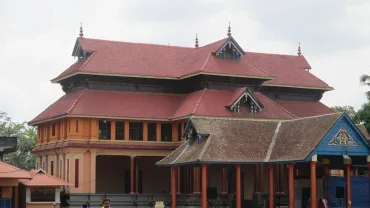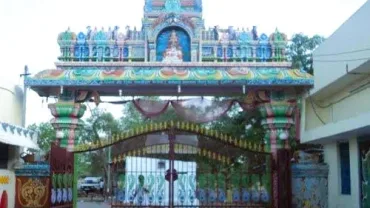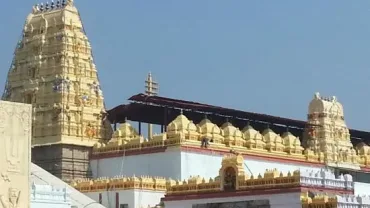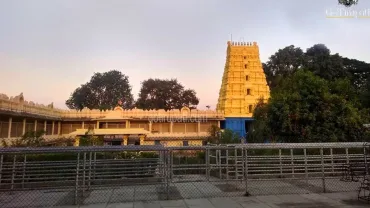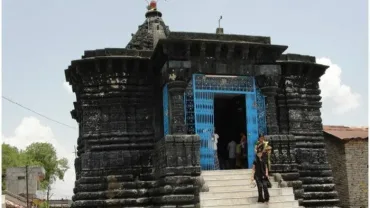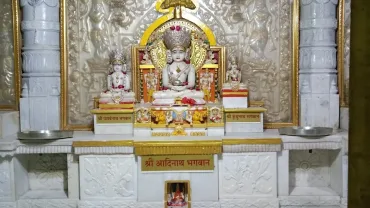- Blog
- 20 Oct 2022
Chengannur Mahadevar Temple, Kerala
About and History of Chengannur Mahadevar Temple, Kerala Chengannur Mahadevar Temple, Kerala is one of the famous and oldest temples located in Alappuzha district. The place where the Chengannur temple is situated was said to be under the control of Vanghipuzha Thampuran. This place was leased to one Nayanaru Pillai. One day while the maid […]
- Blog
- 06 Oct 2022
Sri Shilamkot Renuka Yellemma Temple, Alladurg
About Sri Shilamkot Renuka Yellamma Temple, Alladurg Sri Shilamkot Renuka Yellemma Temple, Alladurg is one the ancient Hindu temple located in Alladurg village in Telangana. Alladurg is the presence of Bethalaswamy temple, the only temple dedicated to the demon god very similar to the Bethala temple of Kondagattu in the Karimnagar district. Renuka Yellamma temple […]
- Blog
- 03 Oct 2022
Kondagattu Anjaneya Swamy Temple – Jagtial
History of Kondagattu Anjaneya Swamy Temple Sri Anjaneya Swamy vari Devasthanam is situated on a hill called Kondagattu Amidst of hills and forest area It is an ancient temple in karimnagar District state to have come into existence at about 500 years above attracting good No. of pilgrims. The presiding deity, Sri anjaneya Swamy varu […]
- Blog
- 03 Oct 2022
Sri Ketaki Sangameshwara Swamy Temple, Jharasangam
The History of Sri Ketaki Sangameshwara Swamy Temple, Jharasangam Ketaki Sangameshwara Swamy Temple is an ancient Hindu temple. The Rajagopuram is very tall, with images of local gods and goddesses in various dancing forms. The courtyard of this shrine is vast with a herbal garden. The gateway of this temple is very attractive too. The […]
- Blog
- 03 Oct 2022
Sri Ramachandra Swamy Temple, Jeedikal
About Sri Ramachandra Swamy Temple, Jeedikal Sri Ramachandra Swamy Temple, Jeedikal is a famous Srirama Temple. According to local lore, the temple’s existence dates back to ‘Tretayuga’ as it was here that Lord Rama, while in exile, is said to have shot Rakshasa Maricha with an arrow, who came in the guise of a golden […]
- Blog
- 03 Oct 2022
Sri Raja Rajeswara Swamy Devasthanam, Vemulawada
About Sri Raja Rajeswara Swamy Devasthanam, Vemulawada This shrine is popularly known as ‘Dakshina Kasi’ [Southern Banaras] and also as “Harihara Kshetram” for there being two Vaishnava temples in the main temple complex, i.e., Sri Anantha Padmanabha Swamy Temple and Sri Sita Rama Chandra Swamy Temple, and Sri Anantha Padmanabha Swamy is the Kesthra Palaka […]
- Blog
- 02 Oct 2022
Dharmapuri Lakshmi Narasimha Swamy Temple
About Dharmapuri Lakshmi Narasimha Swamy Temple Dharmapuri Lakshmi Narasimha Swamy Temple has two very different idols of Lord Narasimha Swamy, i.e., the oldest one (pata Narasimha swamy) and the later one (kotha Narasimha swamy). This temple is one of the most important settlements of Vedic Brahmins in the state. The village of Dharmapuri earned spiritual […]
- Blog
- 15 Aug 2022
Sri Narayana Swamy Temple – Jainath
History of Sri Narayana Swamy Temple Jainath One of the oldest temples in the country, Sri Suryanarayana Swamy Temple is located in the center of Jainath Mandal in Adilabad District. This temple is believed to have been built during the Jain period in the 11th and 13th centuries. It has a high peak and is […]
- Blog
- 09 Jul 2022
About Mahankali Temple Kachiguda Mahankali Temple is strongly believed to existing in this region much before the period of Muslim rule. There are no proper records related to when it was actually constructed. It has withstood during the period of Muslim rulers indicated the real significance of this temple and the respect shown by the […]
- Blog
- 09 Jul 2022
Adinatha Jain Temple – Secunderabad
About Adinatha Jain Temple Sree Adinatha Jain Temple located at RP Road in Secunderabad has great historic links to the famous Maurya dynasty. Though the temple is only 200 years old, the idols of Lord Adinatha, Mahaveer Swami and Abhinandan Sawai installed in it date back to about 2,000 years. These idols have been carved […]
